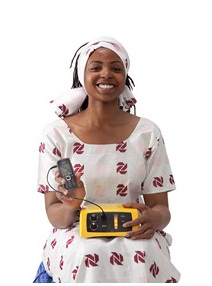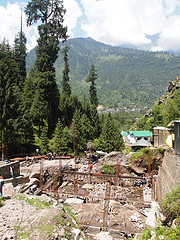As I type this, a UPS beeps furiously behind me, over the growl of half-a-dozen diesel generators on the street outside. I’m in an Internet café in Leh, a city nestled in a Himalayan valley surrounded by 6,000-metre / 20,000-foot peaks, the fast-growing capital of India’s northernmost territory Ladakh. It’s clearly outgrown its electrical capacity; power cuts hit several times a day.
Power generation is a deeply unsexy but profoundly important subject in the developing world. Technology is busily transforming lives all around the globe even as you read this—but a dearth of reliable electricity is a massive obstacle even in major cities, much less faraway villages.
People do find various imperfect and ingenious ways to cope. I was once on a riverboat in Guatemala whose captain distributed newly powered phone batteries to inhabitants scattered along the river, and collected their old ones to charge when he returned to civilization. You’ll find stores selling small-scale solar power equipment in remote small towns throughout Uganda, and occasional microhydro generators in the Himalayas; and people everywhere burn through enormous (and toxic) amounts of scarce (and expensive) diesel to power generators when their lights go out.

But there has to be a better way: and, increasingly, there is. In particular, I’ve had my eye on Fenix International for awhile now. Their ReadySet battery has two cigar lighter and two USB outputs to charge radios, lights, and batteries, and can itself be recharged via solar, bicycle, or wall power. Plus, they’ve recently released a universal charger that can power up almost any lithium-ion battery via a USB plug. (I wish I’d known this before I’d set out on this trip; I could have left both of my camera-battery chargers at home.)
It gets better, and wackier. There is also this BioLite stove that charges your cell phone And the Bill and Melinda Gates Foundation recently awarded $100,000 to a project that seeks to use soil microbes to power fuel cells, which, it is claimed, could be built from scratch, in a few minutes, for pennies. I have to confess I’m a little skeptical, but I’ll be watching with interest.
In the long run, of course, localized micropower projects aren’t enough for serious economic development; you need a sizable and stable electrical grid. But in the interim, a little power is a whole lot better than none, and can and does make a huge difference. So here’s hoping that those microbes are a megahit.
